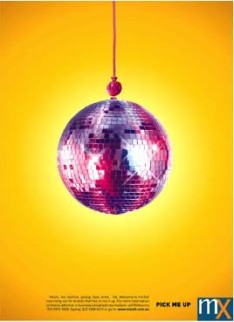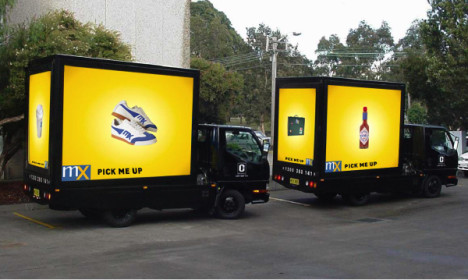mX could have stayed relevant if it dropped the ‘commuter paper’ mentality
When mX was challenged to innovate or die by the rise of digital, Ben Lilley asks why death was chosen over innovation.
Launching mX in 2001 was a career highlight for me. Just eight months prior, I’d taken the leap from senior creative at George Patts to Creative Director of my own agency, SMART, with CD and co-founder Paul Findlay.
Our idea was for a creative boutique with a focus on dot com brands. It didn’t take long to work out what a bad idea that was. The need for some ‘proper’ bricks and mortar clients became rapidly evident.
Herald & Weekly Times (HWT) was a significant advertiser at the time who to us seemed in need of creative inspiration. After several months of persistent requests, they finally agreed to allow us a look at a highly confidential project.
The brief was to introduce Melbourne to a phenomenon that was sweeping the world: the free daily metropolitan newspaper. Twenty-nine major cities had already switched on to this dynamic news format, from Prague to New York and London to Toronto.
News’s version was to be a fresh and contemporary afternoon edition for young urban professionals. Covering the news of the day in colourful bite-sized chunks of entertainment, sports, business and lifestyle, with a dose of gossip and glamour. All printed on quality crisp, white stock. With a commitment to maintaining a vibrant editorial design and environment for quality and creative advertising. SMART even had the added bonus of being able to create ‘bespoke’ ads for advertisers whose work was not up to the creative standard. A nice and very welcome source of additional revenue at the time!
 The challenge was to position mX as a paper that, unlike the other low-quality free reads on offer, commuters actually wanted to pick up and advertisers actually wanted to appear in. With its emphasis on an uplifting editorial tone, the pitch line virtually wrote itself: Pick Me Up. It won us the account. And with a planned February launch, Christmas was officially cancelled for our fledgling 5 person agency.
The challenge was to position mX as a paper that, unlike the other low-quality free reads on offer, commuters actually wanted to pick up and advertisers actually wanted to appear in. With its emphasis on an uplifting editorial tone, the pitch line virtually wrote itself: Pick Me Up. It won us the account. And with a planned February launch, Christmas was officially cancelled for our fledgling 5 person agency.
The highly visual campaign that followed was simple and single-minded. A series of branded mX “pick me up’s” were photographed to represent the paper’s content: trainers, a disco-ball, an energy drink and so on.
This highly visual imagery was then rolled out across everything from cinema and outdoor to the street dispensing units, with just the mX logo and “Pick Me Up” line. No copy – a revelation for News. The trade marketing sales materials followed the theme and tone exactly – another revelation. And lo and behold it all worked (unlike the Fairfax equivalent which was launched with a much more conventional newspaper campaign and disappeared quickly without a trace.)
The success of the Melbourne launch subsequently saw the product and campaign replicated across Sydney and Brisbane. And for a time mX attracted a slew of first rate advertisers and enthusiastic readers alike. It was a smart and aggressive display of dominance by News. And its success was a credit to our client, HWT managing director, Julian Clarke.
“Pick Me Up” was also one of the earliest campaigns I wrote as ECD of SMART. It was the starting point of a journey that saw our agency grow from those 5 original SMART staffers to more than 100 a decade later. And “Pick Me Up” remained the mX tagline throughout that time, in fact right up until its closure today. News took almost as much of a punt on us as it did on mX. And it paid off for us both. So I for one am sorry to see mX go.
And I can’t help but feel it could have been otherwise.
Julian is now News Corp CEO and has said mX’s closure was inevitable due to the “swift shift to mobile” of mX’s “young commuter audience”. But respectfully, I would suggest mX’s slow shift to mobile was more likely the culprit.
It took exactly ten years from mX’s launch for the internet to be declared the main news source 18 to 29 year olds, in 2011. The shift to mobile as a dominant news medium took even longer. But the writing had clearly been on the wall for mX and newspapers for years earlier. And in my book, ten years was more than ample time for the mX model to grow and evolve.
After all, mX and news were hardly the first categories to be usurped by the Internet. From Facebook to eBay to Uber to Spotify, digital platforms have disrupted every traditional business category. In newsprint, digital real estate, employment and car platforms ripped out classified revenues. But just as many innovative brands and businesses who saw the disruption coming were instead able disrupt themselves first.
This was mX’s missed opportunity.
If we look at mX as the “Pick Me Up” that I still like to – a free afternoon shot of news and entertainment – it remains potentially as potent today as it was in 2001.
There are now countless free digital media, from Mamamia and Mumbrella to the Huffington Post, TED, Mashable and Funny or Die. All of which provide just such a daily Pick Me Up for loyal readers everywhere. And all backed by innovative publishing revenue models that advertisers are happy to pay for.
What should have been disrupted was the mX distribution and delivery model – from ‘analogue’ newsprint delivery to an integrated multimedia digital model. Drop the ‘commuter’ and ‘paper’ from mX’s original ‘free daily afternoon commuter paper’ model. And instead make it a digital ‘free daily afternoon Pick Me Up’. Replace the streets and stations of Melbourne, Sydney and Brisbane as delivery channels, with FaceBook, Twitter, YouTube, Instagram and a genuinely engaging and interactive Facebook, web and app experience.
Instead of just stripping costs from production and editorial content in a never ending value-depleting downward spiral, News could have switched costs. From expensive physical distribution assets which add no value, to equally expensive but high-value digital assets and most importantly, quality creative content producers (not just more journalists).
Net net the operating costs potentially remain the same. But the consumer and therefore advertiser experience is vastly richer and more rewarding. As are the new digital/naked/freemium/more-innovative revenue models that become possible with a pure play digital, rather than newsprint, mX brand. Instead we were left with a cut and and paste newspaper produced on shoddy stock by a depleted editorial team valiantly struggling to stay afloat.
Costs wouldn’t have improved with digital integration. But revenues most certainly would. And News would all of a sudden have created a genuinely modern and innovative media proposition. Wishful thinking perhaps. But for me a pure-play digital mX could have been just the pick me up News needed to keep this once thriving brand alive.
- Ben Lilley is chairman and CEO of McCann Worldgroup





News already has news.com.au, the No. 1 news website in the country, targeting a similar demographic. Why would it push yet another free digital property to compete against its paywall mastheads? News.com.au is already controversial among the metro titles for hoovering up audience. mX existed only because of its distribution method – smartphones killed that, and it lost its reason to live.
User ID not verified.
Fair question @shaun. But why does the number 1 in any market bother to have a brand portfolio? Like most large corporations, News has multiple ‘offline’ and online products, to target different consumer and advertiser demographics, needs and niches. And to lock out competitors. A digital mX property like the one outlined here would be significantly different from any other News digital property I know of. It would be revenue accretive.
User ID not verified.
You know you can actually advertise inside the trains these days….. so really mX is redundant.
User ID not verified.
Agree in concept, but to be honest, any effort to move from printed press to app or web only is only ever seen as a downsize and a step on the path to inevitable closure.
Without seeing the numbers its hard to make this call – but I’d have liked to have seen News stick with it, potentially re-invest in it, revitalise, and try to compete with mobile devices. Ordinarily its not a strategy you’d ever contemplate, but in the stuck-in-your-seat-with-no-other-option environment of a train carriage or bus, maybe thats a time where consumers may just maintain interest in a printed paper as well as their devices.
Social and device channels could always have been used to maintain engagement with the mX brand, but playing a secondary role to the hero printed product.
As Tim says elsewhere – its sad to see it go.
User ID not verified.
Well said. Shifting mx to a full digital platform seems kind of obvious when spelt out like this. But i doubt it would have ever occurred to news. Once a paper business always a paper business. Would love to have seen how this strategy might have played out though. Could have been a gamechanger.
User ID not verified.
@Shaun Yes news.com.au already has similar content to mX. Even if a digital only mX was successful (in a very crowded digital space), all it would do is cannibalise news.com.au’s audience, and thus lose the number one spot for online news. I don’t see how a digital mX would be significantly different from other News digital offerings. News also shut down a number of free community titles a couple of years ago and these barely rated a mention, yet these were once absolute cash cows and probably impacted more people both in the communities they served and the staff who worked for them, than mX ever did.
User ID not verified.
I guess you didn’t know, mX tried all this.
It was pretty bad timing when the first attempt at mobile content was actually too soon. The short-lived m-site was launched long before the first iPhone and decent data packages so it was clunky and “free” downloads were unfriendly to data costs for users. Its failure sent mX’s focus back to its print-only roots.
Then came the mX app which launched nearly three years ago and won a PANPA for best news site or app, beating much bigger and better-staffed competition. It was slso very popular and was upgraded earlier this year.
Now the app will be taken over by another team in News and kept alive, although I suspect will be quite different.
User ID not verified.
Exactly what I was about to write Mo, it seems that the key suggestion in this article had been (mostly) attempted by MX. They were pushing their app heavily for quite some time.
User ID not verified.
As someone who used to read MX on the train, I would never have bothered to move to the web version of the paper. Once you move into that platform suddenly you’re up against thousands of better choices from actual newspapers to face book etc. The content in MX was never so fantastic I would seek it out online – it was just the convienience of walking past and picking up a free paper worked.
User ID not verified.